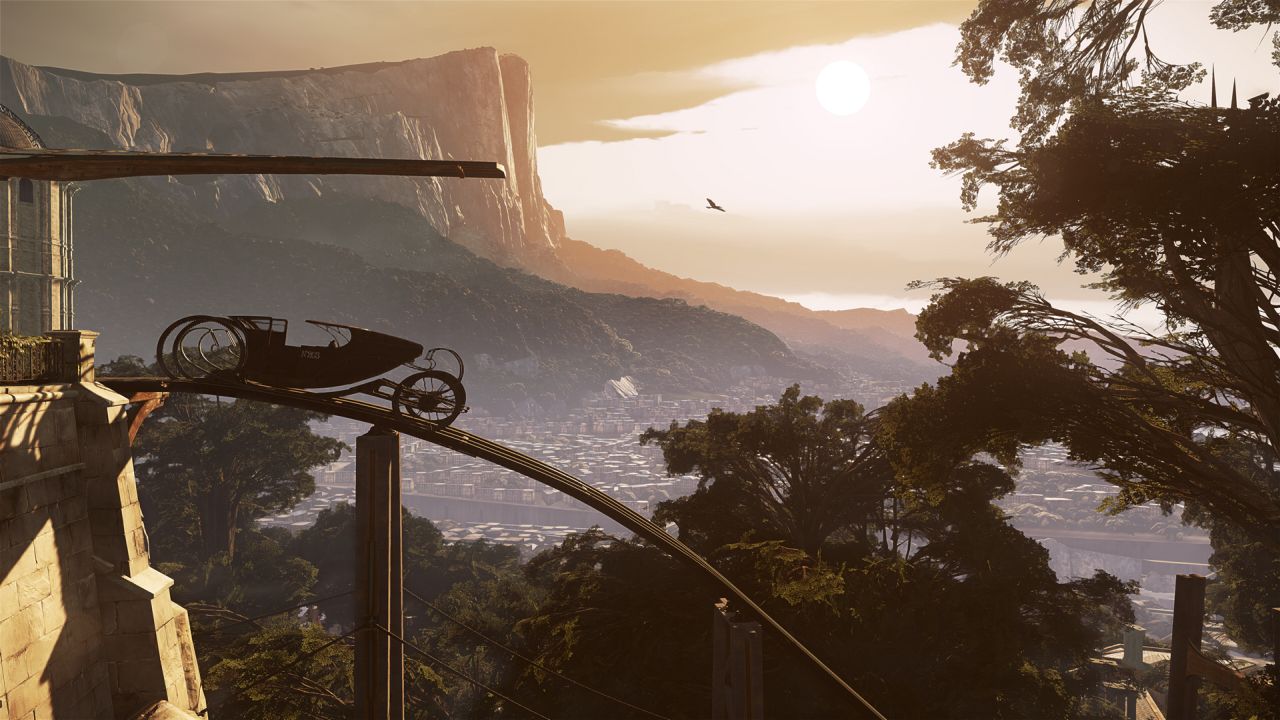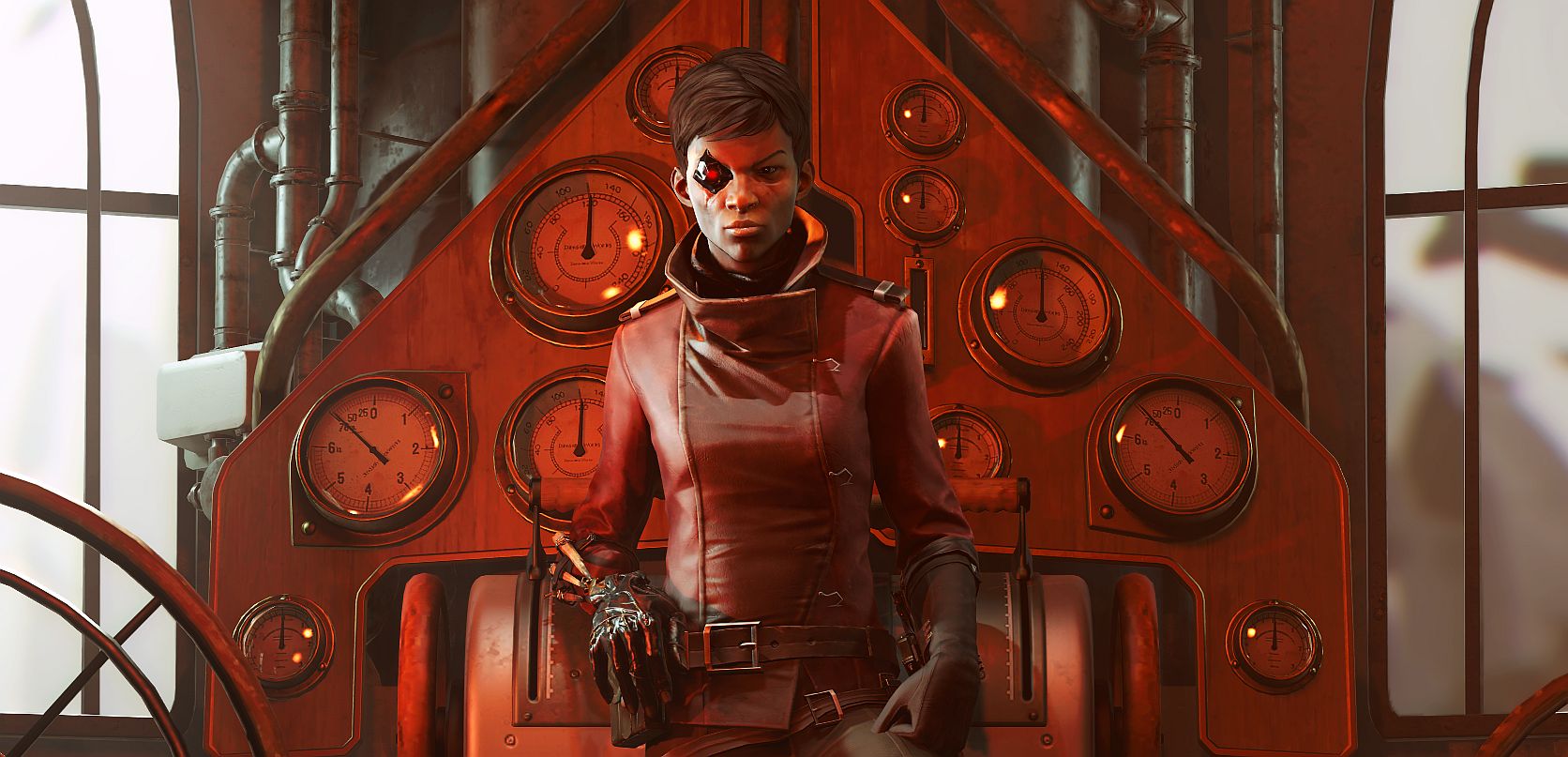Arkane Studios at 20: searching for the balance between accessibility and complexity
Doors are smokescreens for dangers that lurk on the other side. You stack up against them in Call of Duty and wait patiently for the AI to pull the handle down. In Deus Ex, you can blow them into splinters with a mine. In PUBG, you hurriedly close them behind you as you enter, so you become the danger.
For Arkane Studios, creator of Dishonored and Prey, there’s a simple rule: consistency. Wooden doors should be breakable. All doors should be openable unless locked. Doors with nothing on the other side shouldn’t exist, and so players are free to peek through keyholes, through the smokescreen, to plan how to confront what lies beyond.
Dishonored 2 is one of my favourite games, but sales were relatively disappointing. Troubling optics for one of the last surviving triple-A studios still making this kind of game - the “immersive sim”.
Arkane believes it mostly comes down to a key issue: accessibility. Take Prey, an Arkane game set on an alien-infested space station. On the one hand, it’s a shooter with stealth elements. On the other, you can turn into a coffee cup to roll your way into otherwise inaccessible areas. Which of those two things would resonate best with Johnny Gamer? It’s a subject Arkane has been thinking about a lot these past few years.
“The studio itself was created around this idea of pushing the limits, or creating new kinds of immersive sims,” studio director Romuald Capron tells me. “But at the same time, we are more and more ambitious. That means we need to find a larger audience. We need to find the right balance between something very deep, very special, and accessible enough for a larger audience. So, that’s the thing we’ve been thinking a lot about for the last years. How to share this passion with more people, so they understand the beauty of immersive sims, which actually should be at the heart of any video game, because that means you immerse someone in the actual world.
“You want to explore, and you want to test anything, and you want it to react to what you’re doing in the way you would expect. But actually, when you look at other games, it’s not always like that. Sometimes it’s technical reasons. And people sometimes don’t like that it reacts in a realistic way, or in a logical way. ‘Okay. I cannot open all the doors, it’s not a problem.’ But for us, it is. Or you need a good explanation for that. I think it’s still a really interesting goal for us, to keep on working in this direction.”
Part of the problem is in that name: immersive sim. To go back to Johnny Gamer once more, he’s the kind of guy who probably buys Madden and a couple of shooters each year. He might go into a store not knowing what he wants and he’ll buy something that catches his eye. It’s why BioShock Infinite’s box art is a man with a gun and not a floating city with a giant mechanical bird taking flight. Johnny doesn’t know what an immersive sim is, but he likes the idea of jumping across rooftops and stabbing people in the neck. To him, Dishonored is a first-person Assassin’s Creed, not an evolution of the Deus Ex formula.
There’s plenty of proof that games with immersive sim elements can sell well. Skyrim might be a sprawling open world RPG, but you can also sneak into anyone’s house and rob them blind like it’s a sequel to Thief. BioShock lets you hack terminals and shoot bees from your hands. Breath of the Wild allows you to circumvent puzzle solutions by creating wirework from dropped weapons, or by manipulating physics.
“I think that immersive sims, I don’t think it’s a genre,” game director Dinga Bakaba explains. “I think it’s a mistake to say that. Warren Spector said that every immersive sim is an action game. I think immersive sim DNA is more a game design philosophy, and maybe we’ve been too forward with those game design tenets, to the point that it became a genre. Romuald spoke about accessibility, and I think it’s a way of becoming inclusive. I know it’s interesting for a company called Arkane to speak about this, but I think that making players feel like this game is made for them, that it’s not something that you need to have a ton of background or be well-versed in games from the ‘90s, or some things like that, is helpful.
“I think that’s a way to open the door. But at the heart, the way we design our games, I think it’s a strength to have this very system-driven design, and trying to make the game much larger than what I have on my screen, and all those principles. You know, we always had this joke with Raph [Colantonio, Arkane co-founder] that if one day, Arkane made a go-kart game, it would allow you to backstab people and possess them. But beyond the joke, I would assume that if we were to make a go-kart, or a simulation boxing game... not that that’s what we are doing right now. But if we were - I’m not revealing anything - I’m pretty sure that the design philosophy and the lineage would inform what the game would be.”
To deliver that accessibility, Arkane isn’t talking about “dumbing down”. Instead the studio is looking at methods of layering, where there’s always an obvious, straightforward option for players who want a more guided experience. If you want to look beyond that gleaming corridor ahead, you might find an air vent tucked away in a dark corner of the room.
You can see some of this in Dishonored 2. Take the Clockwork Mansion level: when you enter, there’s a lever illuminated by the light right in the middle of the room. Pull that and you trigger the “guided” playthrough of the level. But if you look up, there’s a skylight above you. Shoot an arrow to smash the glass and you can climb up into the rafters and into the spaces between the rooms. While some people enjoy freedom and like level design that makes them feel smart, others are hit with choice paralysis - worried that they’re playing the “wrong” way.
“That’s a takeaway I have from [the] Dishonored [series],” Bakaba says. “We always have someone who says - and it may be someone from the team, or a playtester, the player, sometimes reviewers - who says, ‘I don’t know how this game wants me to play it.’ Which is interesting for us, because the goal is for you to answer that, right? But I don’t think the takeaway is, ‘Well, let’s insist that the game has to be played whatever way you want,’ because it will only make people feel more disconnected from it, when they don’t get it. And that’s not the point. It’s not about getting it at all.
“So, I think if you were able to say, ‘Well, this is the most, I would say, probable, and the clearest way to play the game. This is one way. But you have all these other options that don’t paralyse this mental model that I’ve made of the game, and why it is, and what it asks from me.’ Then I think you have a good compromise between something accessible, but still giving all those options. I think that would be the approach.”
There’s also another layer to this issue: the accessibility of an idea. I personally love being transported to weird and wonderful places in video games. Dishonored’s Dunwall is up there with my all-time favourites, but are its rat-infested streets too much for the average player? If Arkane bit the bullet and created a modern military shooter that swapped powers for gadgets, its design philosophy would still hold up - night vision to see in the dark, cameras under doors, breach charges to create new pathways - but would the studio lose its identity in the process?
“Let’s imagine a gun. Like, in Deathloop, we have guns,” Bakaba says, referencing the studio’s mysterious upcoming game. “You have seen that in the trailer. So, we have guns. And obviously, we are in our own world, in this game. This is not Earth. So, when Sebastien [Mitton, art director and co-creative director] and his team went about designing guns, we wanted to make sure that they had a proper affordance of what they were and how they would behave, even though it’s not an AK47 and a Desert Eagle. It’s important that in the visual affordance, of course, those guys do a lot of research.
“Very recently, we’ve worked with MachineGames on [Wolfenstein] Youngblood, which is also in an alternate reality world, so the guns are not real guns. But still, they got this affordance. And that’s an example I give with the guns, but I think it can be broadened to a lot of the concepts that come from making your own world. So, I would say there is a way to be accessible without necessarily going for something common, I would say, if you get my meaning.”
Arkane is celebrating its 20th anniversary today. Though it’s been around for two decades, the studio is still making the kinds of games it wants to play, even if it is trying to evolve to keep pace with the audience’s tastes. It just wants to remove the smokescreen and make its objectives more clear, allowing players to peek through the keyhole and see what’s on the other side: a different kind of action game.





